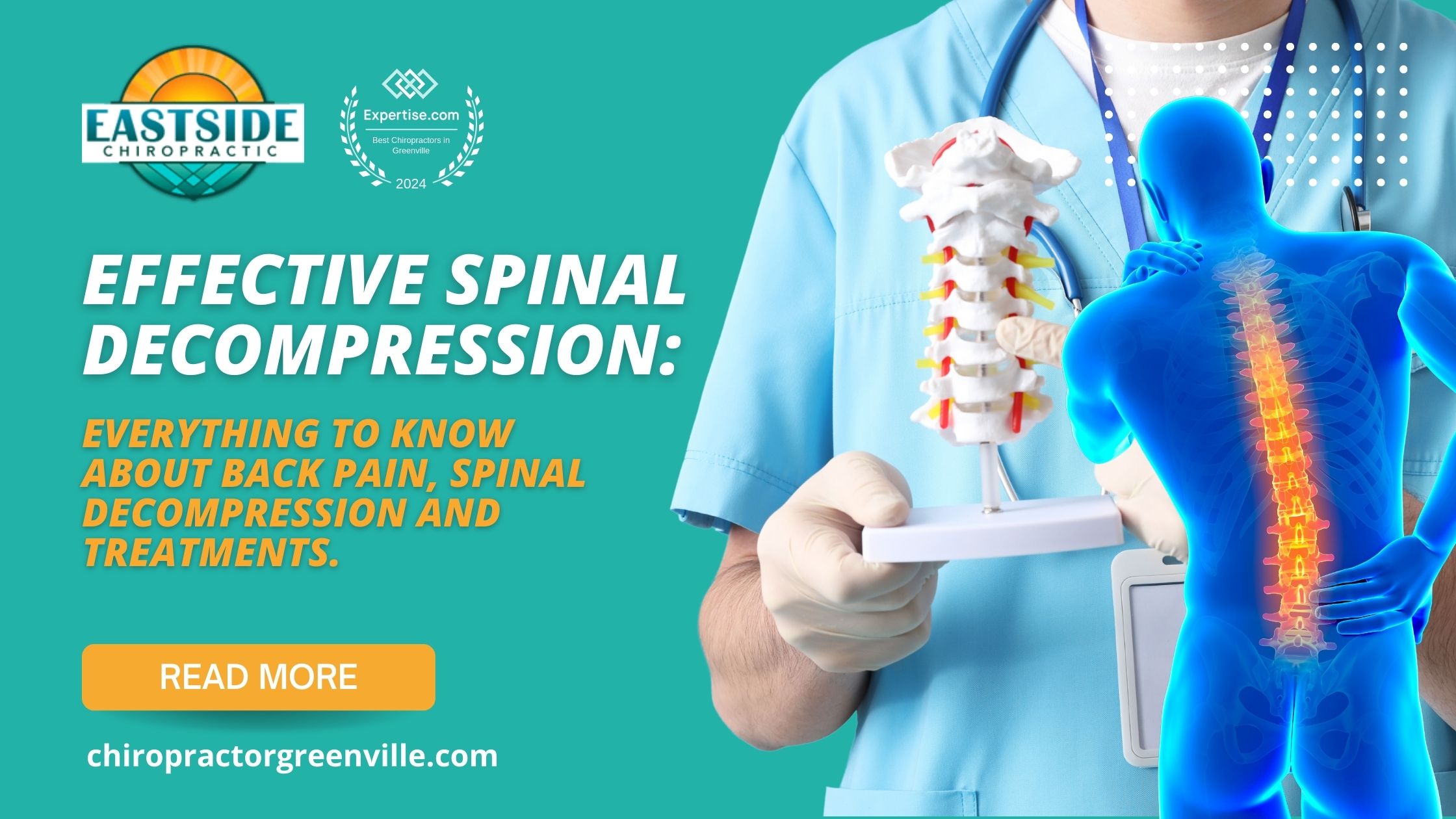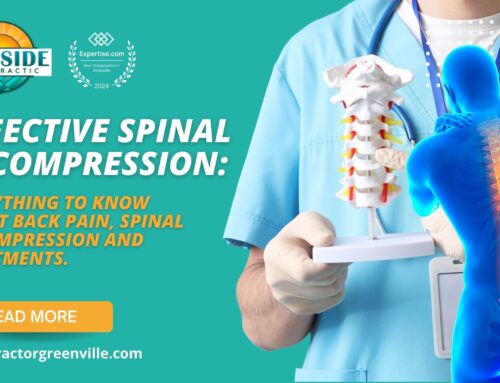Introduction
So, you’ve been dealing with nagging back pain, and someone’s mentioned spinal decompression. But before diving headfirst into it, you probably have a few hesitations, right? Especially about those “risks of spinal decompression” and “spinal decompression side effects” that everyone seems to mumble about. Well, you’ve landed at the right place—let’s unpack all this together, shall we?
What is Spinal Decompression?
General Overview
At its core, spinal decompression is a therapy designed to relieve pressure on the spine. Think of it as giving your tightly wound-up spine a much-deserved breather. This can be either a surgical or non-surgical process.
Types (Surgical and Non-Surgical)
- Surgical Spinal Decompression: This is an invasive procedure where parts of the bone or tissue pressing on the spinal cord or nerves are removed.
- Non-Surgical Spinal Decompression: This involves the use of a traction table or a similar motorized device to stretch the spine gently.
The Science Behind Spinal Decompression
How It Works
Non-surgical spinal decompression aims to create a negative pressure within the spinal discs. Imagine a vacuum cleaner sucking out the bad stuff, allowing nutrients and other beneficial substances to flow in.
Benefits
Done correctly, it can increase blood flow, reduce disc bulges, and relieve pain associated with herniated discs, degenerative disc disease, and more.
Why Consider Spinal Decompression?
Common Conditions Treated
People typically seek spinal decompression for conditions such as:
- Herniated or bulging discs
- Sciatica
- Degenerative disc disease
- Posterior facet syndrome
Patient Testimonials
“After months of relentless back pain, spinal decompression at Eastside Chiropractic PA in Taylors, SC, was a game-changer for me,” says Mark D., one of the many who have benefited.
Understanding the Risks of Spinal Decompression
You might wonder, “Is spinal decompression a bed of roses, or are there thorns hidden?” Let’s dig deeper.
General Risks
Whether surgical or non-surgical, spinal decompression does have its set of risks. These can range from mild discomfort to serious complications, although the latter is quite rare.
Specific Risks for Different Types
– Surgical Risks: Infection, blood clots, nerve damage, and anesthesia complications are on the list.
– Non-Surgical Risks: Some experience muscle spasms, temporary pain increases, or even no improvement at all.
Common Spinal Decompression Side Effects
Immediate Side Effects
After a non-surgical session, one might feel muscle spasms or soreness—like the aftermath of a rigorous gym session.
Long-Term Side Effects
In some cases, although rare, individuals report recurring pain after some months, requiring further intervention.
Who Should Avoid Spinal Decompression?
Contraindications
If you have certain conditions like osteoporosis, fractures, or metal implants in your spine, spinal decompression might not be for you.
Conditions That Worsen with Treatment
Be wary if you’re dealing with severe spinal stenosis or infections; this treatment could exacerbate your situation.
Precautions to Take Before Undergoing Spinal Decompression
Pre-Treatment Testing
Before diving in, proper imaging tests like MRIs or X-rays should be on the agenda. These help confirm if you’re a candidate.
Consultations
An in-depth consultation is essential. Ensure your chiropractor knows your medical history inside and out.
Questions to Ask Your Chiropractor
Essential Inquiries
– What is your experience with spinal decompression?
– How many similar cases have you handled?
– What can I realistically expect?
Red Flags
Be cautious if the chiropractor sounds too salesy or if they dismiss your questions without proper explanations.
Managing Spinal Decompression Side Effects
Pain Management
Things like ice packs, anti-inflammatory medication, or even light stretching can help manage discomfort after sessions.
Physical Therapy
Incorporating physical therapy can be hugely beneficial for long-term recovery and pain management.
Post-Treatment Care
Do’s and Don’ts
– Do: Follow all post-treatment instructions to the letter.
– Don’t: Engage in strenuous activities right after the sessions.
Follow-Up Sessions
Regular follow-up sessions help ensure that the treatment is working and allow your chiropractor to make necessary adjustments.
Comparing Surgical vs. Non-Surgical Spinal Decompression
Pros and Cons
– Surgical Pros: Long-term relief if successful.
– Surgical Cons: Higher risk factor, longer recovery.
– Non-Surgical Pros: Non-invasive, quicker recovery.
– Non-Surgical Cons: Might require ongoing sessions.
Risk Differential
Surgical procedures carry inherently more risk due to their invasive nature. Non-surgical methods are generally safer but might not offer permanent solutions.
Real Experiences: Case Studies
Success Stories
Rebecca H. from Taylors, SC, saw a remarkable improvement: “I went from being bedridden to walking without pain after consistent non-surgical spinal decompression sessions.”
Lessons Learned
It’s clear that patient-specific treatments yield the best results. There is no one-size-fits-all in spinal decompression.
Is Spinal Decompression Right For You?
Personal Assessments
Take time to assess your physical condition, pain levels, and medical history. Seek second opinions if unsure.
Professional Advice
Consult multiple experts, from general practitioners to specialized chiropractors, to get a holistic view.
Conclusion
Spinal decompression could indeed be the miracle you’ve been praying for, but it’s essential to approach it fully informed. While the risks and side effects are there, proper precautions and consultations can help mitigate most of them. At Eastside Chiropractic PA in Taylors, SC, you’re assured of professional and tailored care to make your spine feel like a million bucks again.
FAQs
1. What are the most common side effects of spinal decompression?
– Muscle soreness and temporary increases in pain are the most common, but these usually subside quickly.
2. Is spinal decompression painful?
– Generally, non-surgical spinal decompression is not painful. Some patients feel a slight stretch, but it shouldn’t be uncomfortable.
3. How long does it take to see results from spinal decompression?
– Most patients start feeling relief after a few sessions, but it varies from person to person.
4. Can spinal decompression cure my back pain permanently?
– While it can provide long-lasting relief, it’s not a guaranteed, permanent cure. Always consider maintenance treatments and lifestyle changes.
5. Are there any long-term risks of spinal decompression?
– Long-term risks are rare but can include recurring pain. Continuous monitoring and follow-up sessions can help manage these risks effectively.


